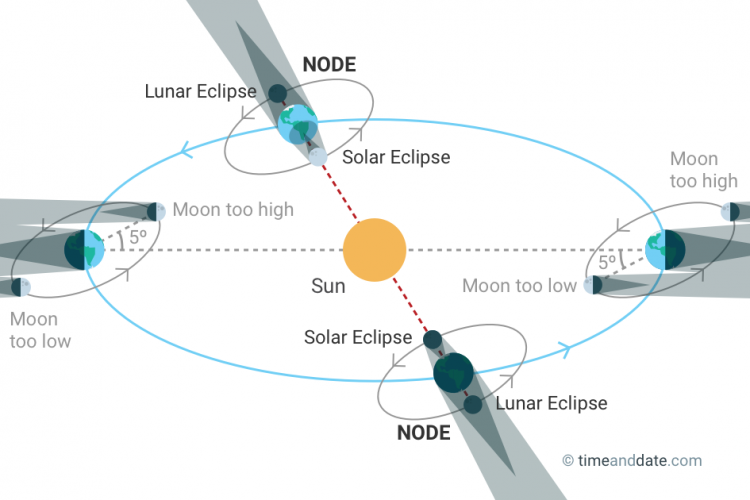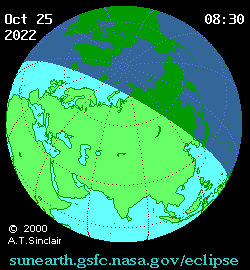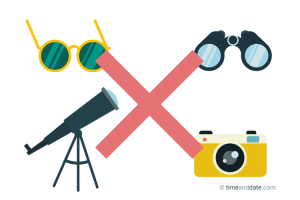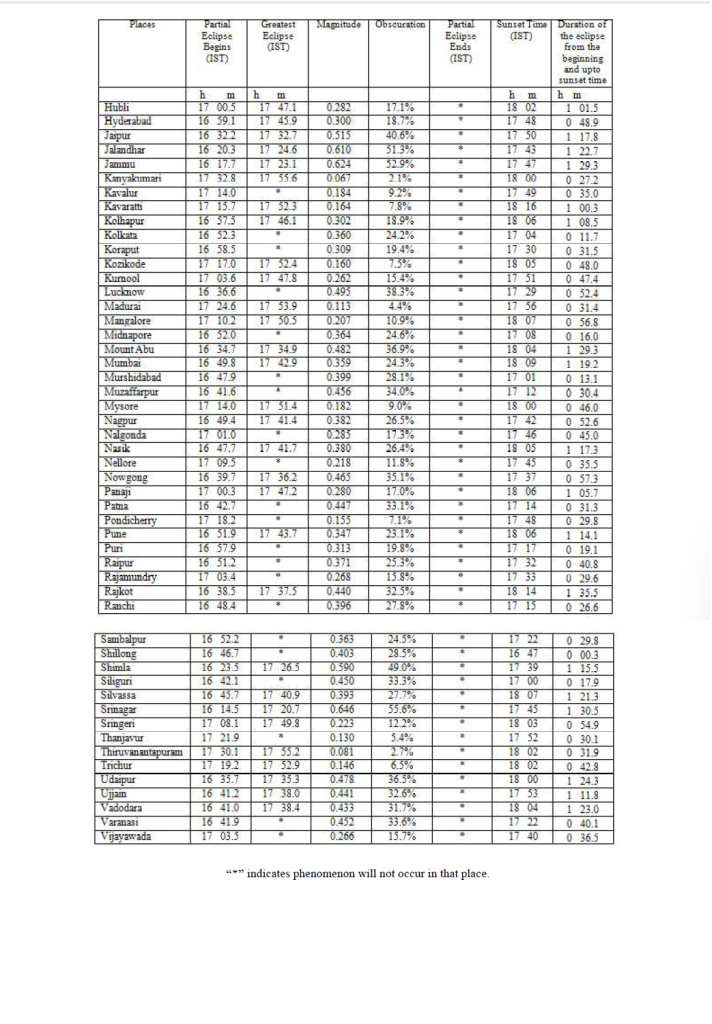On 25th October 2022 along with Diwali, India is going to experience a partial solar eclipse. Solar eclipse will be visible from the most of part of India excluding North-East states. Here are few highlights and related scientific explanation of this astronomical event.
What is Partial Solar Eclipse?
Solar eclipses occurs when the Moon comes in between the Sun and Earth. As a result, an observer from Earth can see the Moon passing over and covering the Sun.
Also, during solar eclipse, due to the Sun, the Moon’s shadow is casted on the Earth.
A partial solar eclipse occurs when, the Moon, the Sun and Earth are not aligned in a perfectly straight line. In this type of eclipse, the Sun is only partially obscured by the Moon. From our perspective, this looks like the Moon has taken a bite out of the Sun. In partial solar eclipses, the Moon casts only the outer part of its shadow, the penumbra, on Earth.

Where the Eclipse is visible?
This partial solar eclipse will be visible from Europe, Russia (Ural region and Western Siberian region) ,Central Asia and Western Asia, and north-east of Africa.
The animation shows how the moon’s shadow moves over the globe.

What are the timings of Eclipse?
| First location to see the partial eclipse | 25 Oct, 08:58:21 UTC |
| Maximum Eclipse | 25 Oct, 11:00:16 UTC |
| Last location to see the partial eclipse | 25 Oct, 18:09:00 UTC |
| Partial solar eclipse ends | 25 Oct, 13:02:11 UTC |
Precautions

The Sun’s UV radiation can burn the retinas in the eyes leading to permanent damage or even blindness. This can occur even if your eyes are exposed to direct sunlight for just a few seconds.
Proper eye protection, like eclipse glasses or a Sun filter, is the only safe option
According to NASA, the following materials should never be used to view a solar eclipse: sunglasses of any kind , color film, medical X-ray film, smoked glass
Timing in Mumbai (Local time adjusted)
| Partial solar eclipse begins | 25 Oct, 16:49 |
| Maximum Eclipse | 25 Oct, 17:42 |
| Sunset time | 25 Oct, 18:09 |
| Partial solar eclipse ends | 25 Oct, 18:32 |
Timings for the other Indian Cities

Partial solar eclipse begins when the Moon starts moving over the Sun’s disk.
Maximum eclipse happens when the Moon covers the maximum of the Sun’s disk than at any other moment during the eclipse.
Partial solar eclipse ends when the Moon stops covering the Sun.
Direction of Moon over Sun during eclipse.
If we consider Sun as dial of a clock, then moon will ascend on the Sun from 9 o’clock direction i.e. from South west direction and before the eclipse ends, the Sun will set.
What is Saros Number?
This eclipse belongs to Saros 124 series. It is number 55 of 73 eclipses of this series. All eclipses in this series occur at the moon’s descending node. The moon moves northward in relation to the node with each succeeding eclipse in the series.
It is found that eclipses repeat itself after 18 years and 10/11 days. This means after every 18 years and 10/11 days, the Earth, the Sun, and Moon come in same position with respect to each other. As a result, due to similar alignment, eclipse repeats itself after same duration. This duration is called ‘Saros Cycle’.
All the solar eclipses happening due to a particular alignment of positions of the Sun, the Moon and the Earth and in one set of repetitions are clubbed into a Saros series/Saros family.
Magnitude of Solar Eclipse
The fraction of the apparent diameter of the disk of the Sun covered by that of the Moon at time of maximum eclipse is called the magnitude of eclipse.
Magnitude of partial solar eclipse is 0.8620. The Greatest Eclipse Point is placed at coordinates [61° 38′ 55.6″ N, 77° 20′ 44.7″ E]. From the Greatest Eclipse Point, at the time of maximum eclipse, the Moon covers 82.11% of Sun’s surface.
.
For Mumbai, magnitude of this eclipse is 0.3601. Maximum Eclipse will be at 17:43:00 local time when the 24.41% of Sun’s surface will be covered by the Moon
By- Mayura Behere
